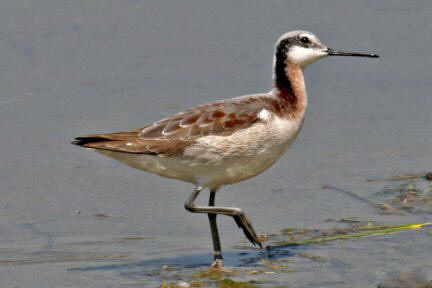
Steganopus tricolor
SUBFAMILY
Phalaropodinae
TAXONOMY
Steganopus tricolor Vieillot, 1819, Paraguay. Monotypic.
OTHER COMMON NAMES
French: Phalarope de Wilson; German: Wilsonwassertreter;
Spanish: Falaropo Tricolor.
PHYSICAL CHARACTERISTICS
8.7–9.5 in (22–24 cm); male 0.07–0.24 lb (30–110 g), female
0.11–0.28 lb (52–128 g). Sexual dimorphism. Female has grayish
white cap and nape; black band from bill through eye to
side of breast; orange foreneck and upper breast; blue-gray
mantle and wing-coverts; reddish chestnut edging on mantle
and scapulars. Male has generally darker and duller upperparts.
DISTRIBUTION
Alberta and California east to Great Lakes. Winters from
North Peru to Uruguay and Tierra del Fuego.
HABITAT
Marshy wetlands on prairies; winters at ponds in pampas, mudflats,
and high-altitude saline lakes.
BEHAVIOR
Often very tame.
FEEDING ECOLOGY AND DIET
Takes mostly aquatic insects and crustaceans. Feeds while
swimming, spins less than other phalaropes; usually pecks from
water or mud, also upends, probes, and scythes through water
with bill.
REPRODUCTIVE BIOLOGY
Usually monogamous; sometimes polyandrous. Male incubates
eggs and cares for young. Lays eggs May–June. Nest scrape in
fairly tall, dense vegetation near water. Clutch contains four
eggs with an incubation of 18–27 days. Hatching success
12–50%, sometimes 0%.
CONSERVATION STATUS
Population estimated at 1 million in 1994 and considered stable
in 2000.
SIGNIFICANCE TO HUMANS
None known.
Photo Gallery of - Wilson’s phalarope
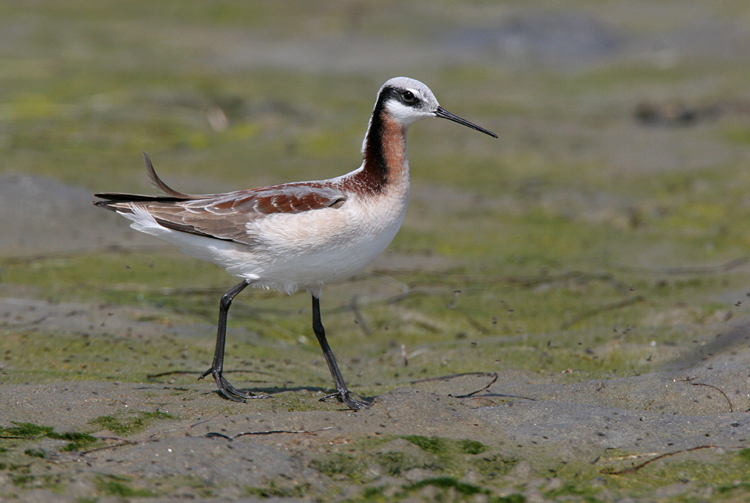
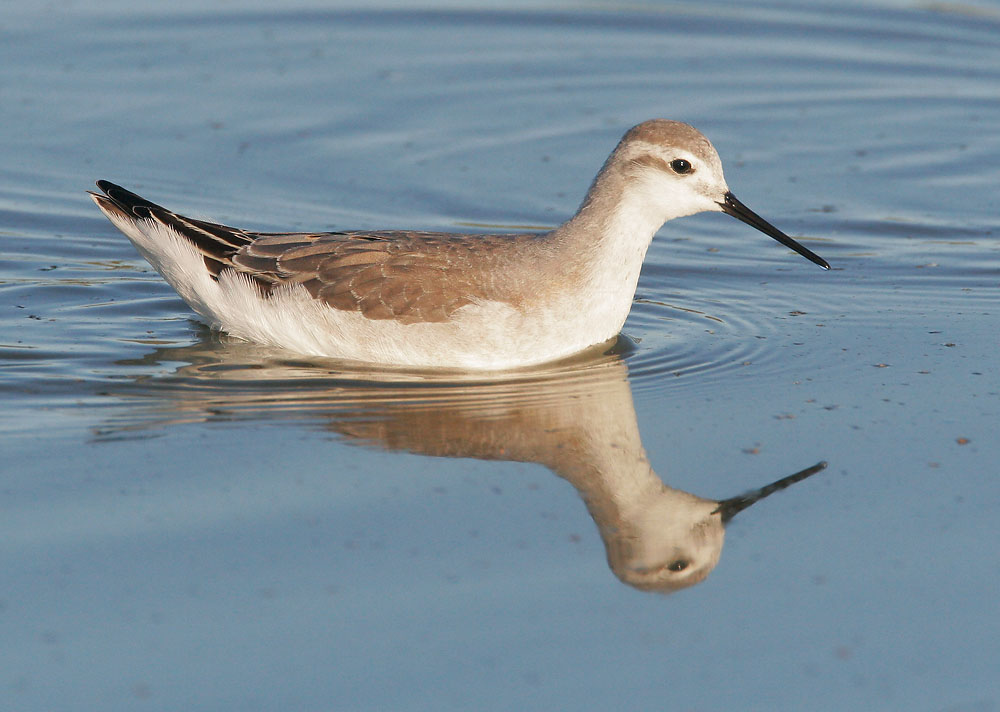
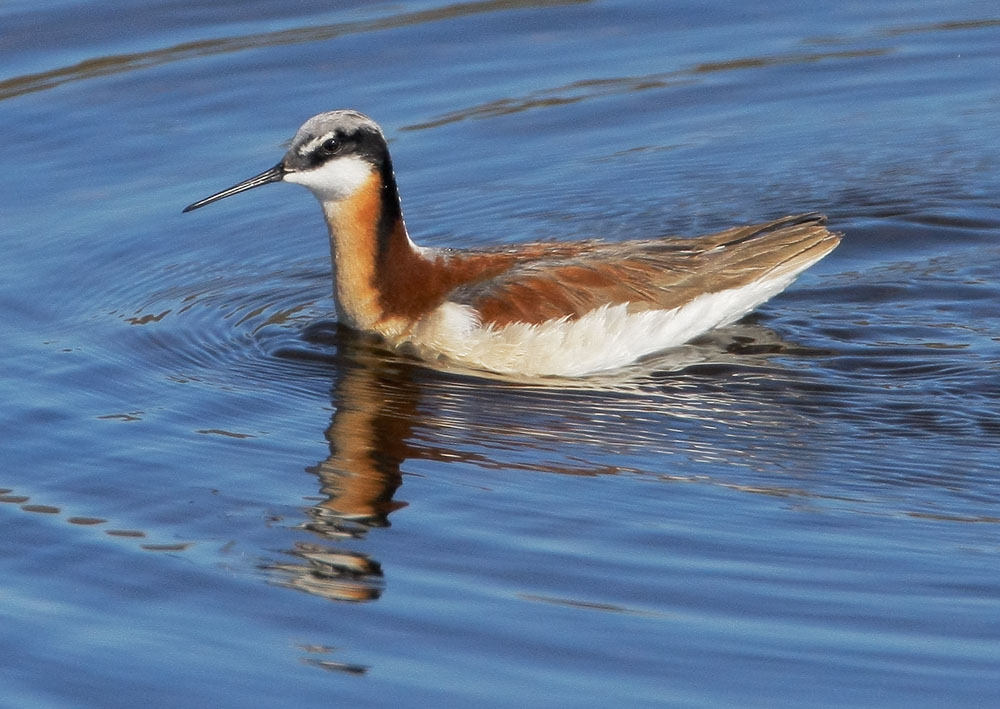
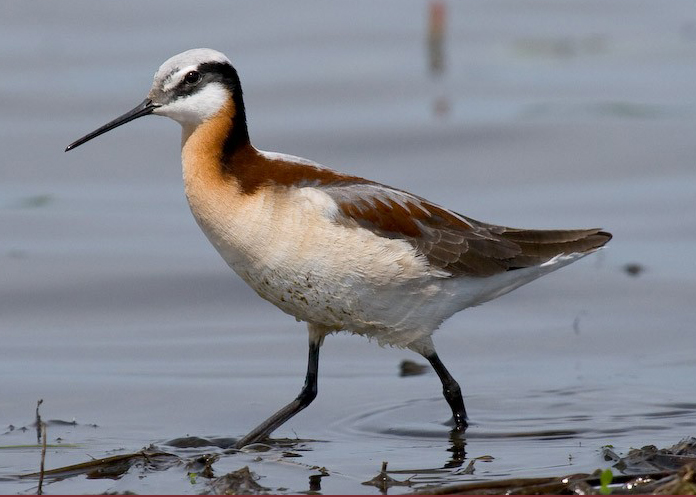
 Animalia Life
Animalia Life